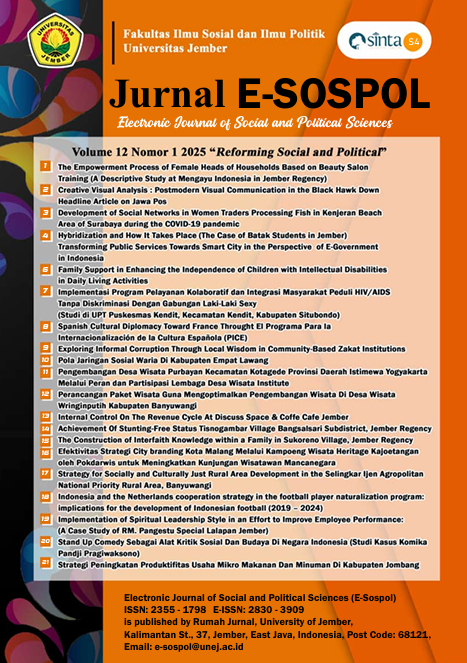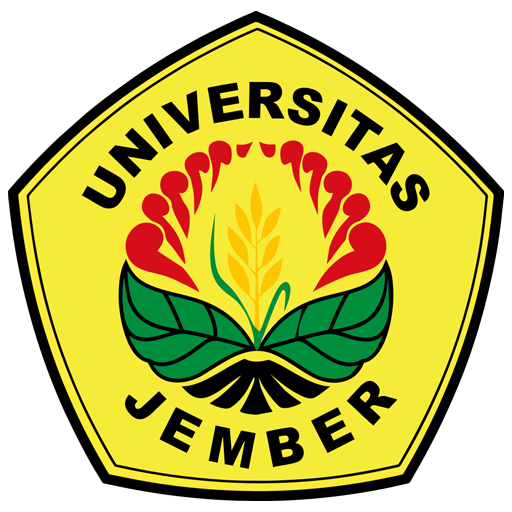Hybridization and How It Takes Place
The Case of Batak Students in Jember
DOI:
https://doi.org/10.19184/e-sospol.v12i1.53701Abstract
This research aims to understand the process of identity formation among regional students in Jember District. The subjects of this study are Batak ethnic regional students from North Sumatra who have resided in Jember District for more than two years. The theoretical framework employed for analyzing this phenomenon is Stuart Hall's theory of hybrid identity. Employing data collection methods such as interviews, observations, and documentation, the findings reveal that the process of hybrid identity formation among Batak ethnic regional students in Jember District is shaped through interactions within public spaces, such as campus environments and surrounding environments. Cultural differences between the objects and the local Jember community frequently result in dynamics within the adaptation process. Consequently, these students must open themselves up to accept and adopt certain elements of the Pandalungan culture, which represents a form of hybridity of the local multicultural Jember community. This leads to a blending of identities, producing a hybrid identity that is reflected in language, etiquette, and culinary. Nevertheless, Batak ethnic regional students in Jember Regency maintain aspects of their authentic identity, such as their clan (marga), Batak language, mardebata (rituals or prayers), and martutur (kindship relationships). This study expounds that the hybrid identity of regional students is continually in a state of 'becoming'.
Downloads
Downloads
Published
Issue
Section
License
Penulis yang mengusulkan naskahnya untuk dapat diproses penerbitannya pada e-SOSPOL dianggap telah menyetujui beberapa hal sebagai berikut:
1. Penulis tidak dapat menarik naskah yang telah usulkan untuk diproses hingga mendapat jawaban dari Ketua Dewan Penyunting atas status naskah artikel ilmiahnya (diterima atau ditolak untuk diterbitkan).
2. Penerbit tidak bertanggung jawab terhadap kasus plagiasi atas artikel yang terbit pada e-SOSPOL
3. Penerbit tidak bertanggung jawab atas data dan isi dari artikel yang diterbitkan pada e-SOSPOL, dan sepenuhnya merupakan tanggung jawab penulis.







